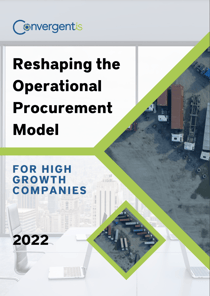There is a lot more to vendor management than meets the eye. On the surface, vendor management involves selecting the right supplier in the early sourcing stages of procurement. But, to those who live and breathe vendor management, you likely know the process involves much more, from managing the seller-buyer partnership to reducing potential risks of working with a vendor, ensuring excellent service deliverability, managing compliance, co-developing new processes and deriving sustainable value from vendors in the long run. Vendor management is complex, to say the least.
With so many critical factors involved, vendor management becomes a weighty endeavor that requires tools with the right capabilities to ensure nothing is overlooked.
Overcoming the Major Challenges of Vendor Management
Most businesses that face challenges with vendor management are those with medium to large supplier bases or a host of suppliers dispersed over large geographical areas. As companies grow larger and their databases becoming more complex and disorganized, it becomes difficult for purchasing organizations to gain a centralized view of their vendors. Therefore, when challenges arise throughout the greater vendor management process, businesses struggle to locate the right documentation or carry out the necessary due diligence before onboarding a new supplier to their roster.
Addressing these concerns comes down to a vendor management strategy that ensures vendor relationships deliver their intended value and are constantly being optimized. Below we have taken some of the key considerations involved in vendor management and framed them as a checklist for your team to determine if you are executing your strategy to the best of your abilities and, if not, whether a rapid vendor portal solution could help to get you there.
1. Ability to Conduct Regular Spend Analysis
Your procurement manager should have accurate insights into spending across all suppliers and the means to run simulations that allow them to determine if they are hitting their lowest targeted pricing (or at least as close as possible). Without an automated solution, this process can be quite time-consuming; however, by conducting these cost comparisons, businesses can determine which sellers provide adequate savings and which are overcharging and therefore, make the right trade-off between price and agility. Additionally, the right tools, become crucial to help businesses determine what kinds of discounts they can earn from large bulk rate purchases.
Furthermore, with accurate insights into spending, purchasing organizations can ensure clear communication of prices that are being sent to the seller. Whether this is through a communication portal integrated with pricing records or simply by making this data more readily available to teams, transparency can prevent hidden costs or other errors that might come up when it comes time to make the final payment.
2. Segmentation and Risk Management
When segmenting suppliers, buyers should be equipped to make smarter, safer decisions before purchasing. Therefore, while segmentation looks at the seller’s profitability, it also considers several other risks such as their reputation, risk of compliance breaches, lawsuits, loss of intellectual property (IP), or the impact of a failed delivery on your organization.
Therefore, purchasing organizations often benefit from having this information correct, up-to-date, and stored in a centralized system for easy reference in all decision-making. SAP currently offers Risk Management solutions that can be integrated with an SAP backend and partner solutions as part of a cohesive approach to vendor management.
3. Easy Vendor Onboarding
To maintain ongoing relationships with suppliers, a simple vendor onboarding process is needed to gather the documentation and data necessary to set the vendor up as an approved supplier. From that point forward, purchasing organizations have benefitted in noting which suppliers are “preferred” when sourcing teams engage in spending analysis and vendor selection.
4. Vendor Performance Evaluation
Buying organizations are encouraged to periodically assess their suppliers, which can ultimately increase cost savings by mitigating the business’s risks. Collecting vendor information comes down to allowing management to assess previous pricing, quality, the volume of goods, delivery dates (among other KPIs) and easily display this in report format for managers to assess. This will come down to creating a dashboard that surfaces this data and makes it easy to read and present to the correct business areas.
5. Guaranteeing On-Time Payments
The end of the vendor management process comes down to paying suppliers on time for the correct amount of goods and services that have been provided. While this sounds like the simplest part of the process, this is generally a misconception. Oftentimes, payments don’t occur as efficiently as they could, resulting in missed early payment discounts and, at times, damaged relationships when payments occur late. Currently, businesses face an average of a 24 day cycle when using paper, which can be decreased to just 2 or 3 days with digitization.
As a result, businesses often look for automated solutions to help manage invoicing and payments. This is possible through end-to-end solutions based on SAP that enables touchless operations, as data is gathered from one procurement document and carried over in alignment with business rules.
A Solution in The Form of a Vendor Management Portal
Every business operates a little bit differently when it comes to vendor management. However, the approach to optimizing these processes has become very similar and, therefore, repeatable. To help businesses deploy complete end-to-end vendor management solutions quickly (in as little as 4-12 weeks), the ConvergentIS team is excited to announce the creation of our solution the Rapid Vendor Portal, built on SAP Work Zone and SAP Business Technology Platform (BTP). With the Rapid Vendor Portal, businesses gain a single view across sourcing, forecasting and the rest of the vendor management process. As a result, procurement teams gain added visibility to these processes and equip leaders with the necessary data to make time-sensitive decisions. As an added benefit, the Rapid Vendor Portal consolidates information giving users a basis to achieve touchless operations, as a single step with a clear path forward.
To learn more about how your business can achieve up to 10% Source-to-Pay savings with the ability to predict, track, and measure actual savings across the enterprise and always see an up-to-date view of costs and savings for sourcing and forecasting, we encourage you to download our free (no obligation) step-by-step procurement guide.


